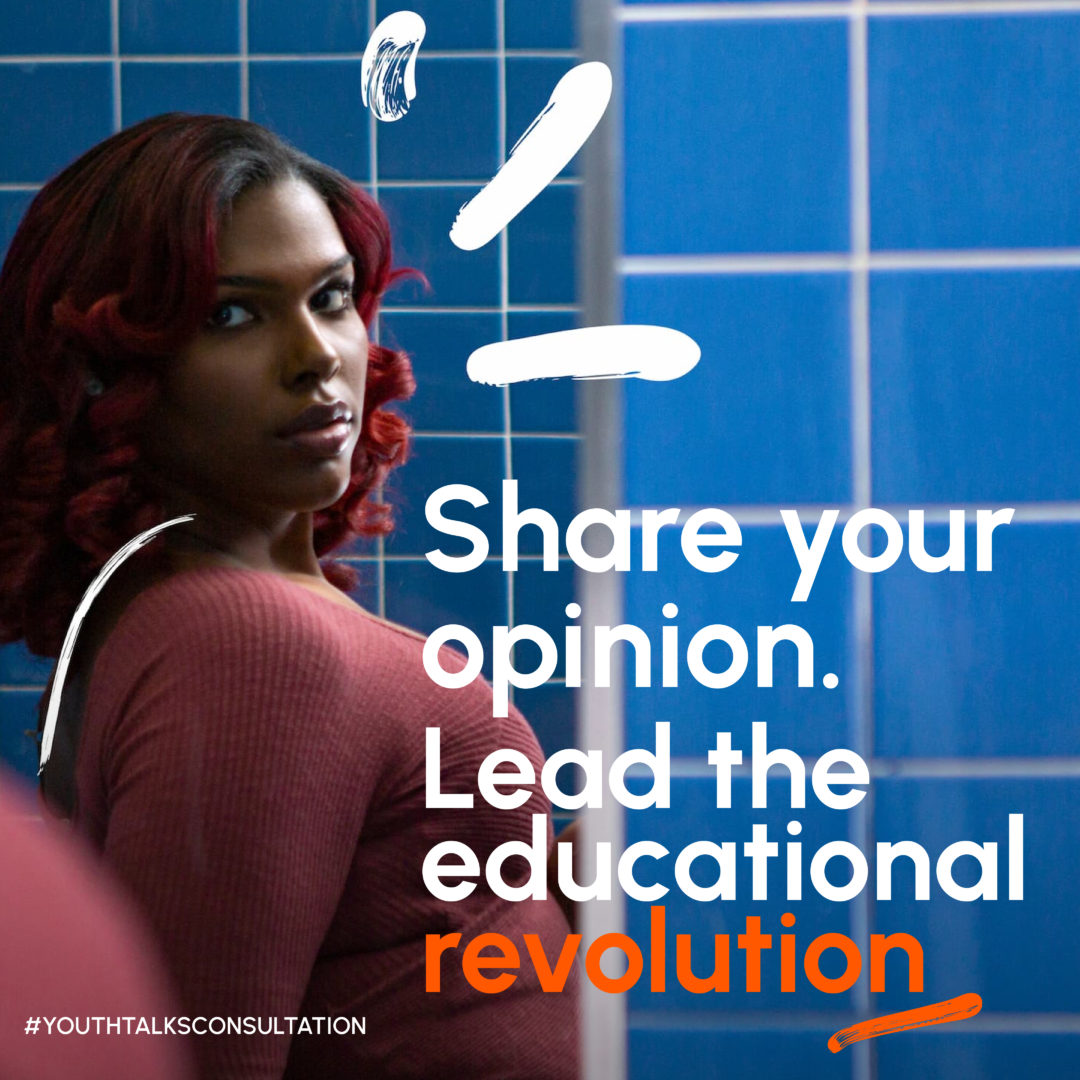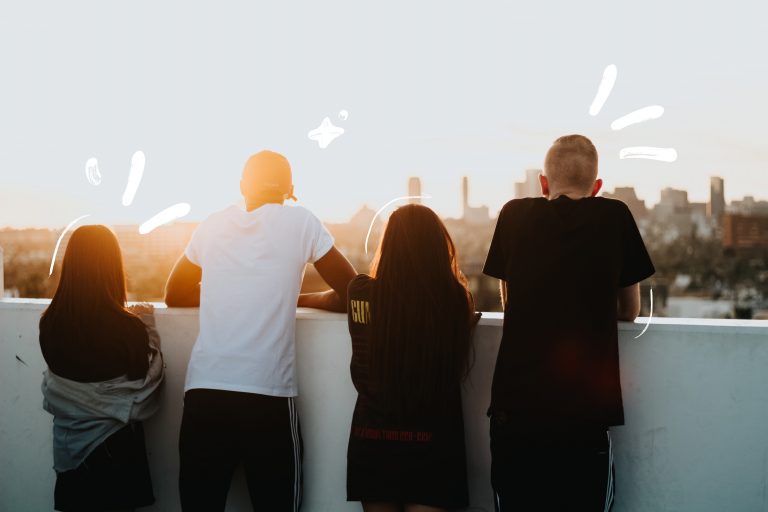In an era where visual apprehension plays a central role in our perception of reality, ensuring a fair and diverse representation of youth is essential. Communication campaigns for citizen consultations have a blind spot on the ability to engage youth in democratic practices. Indeed, to reach them and incite them to participate, we must imperatively rethink youth’s representation in the media and advertising.
1° Noting the lack of diversity in youth images: a blind spot
It so happens that young people have never taken so many pictures of themselves in history with smartphones equipped with cameras, social network news feeds, and Instagram filters; paradoxically, the portraits representing young people on credit or royalty-free image banks remain mainly smooth, Western, and stereotyped.
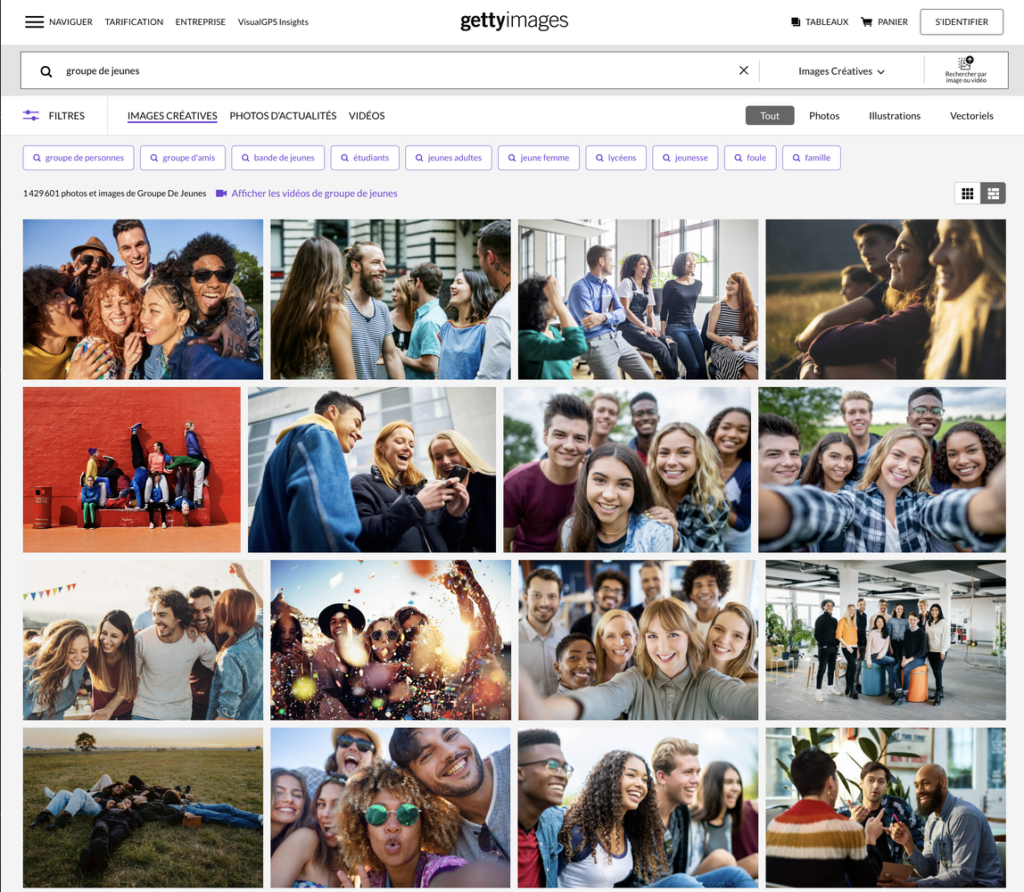
In a citizen consultation, inclusion is both a cardinal value and a challenge. Considering that when consulting openly, it is about setting up a framework that gives voice to all citizens. In fact, before declaring that the consultation reaches all the realities of the audiences it targets inclusively, it is necessary to be able to design and deploy an information and engagement campaign with these target populations.
In the case of the Youth Talks consultation, the target audience is non-standard, as it is both plural and singular. The goal of inclusion at this level becomes a critical success factor.
The initial question of the outreach plan: “How can we make ourselves known to young people around the world so that they want to contribute to the consultation?” is transformed into a series of more essential questions:
- How do we inform young people of the existence of the consultation?
- How can we ensure that young people identify us as an educational initiative of free and non-market expression?
- How can we get young people interested in the project?
- How can we get young people from all walks of life to talk to us authentically?
- How can we encourage young individuals who are often not heard to voice their opinions?
After establishing the brand image, we searched for suitable photos to feature in our social media ads, targeting the younger demographic. We went on the known image banks, general public and professional, with the following visual territory in mind:
Raw, authentic images, almost from “real life,” with inclusive and collective scenes. A photographic grain that recaptures the idea of the film shots, with much more raw attitudes and postures. The initiative wishes to affirm the youth’s dynamism, authenticity, claiming, and militant side.
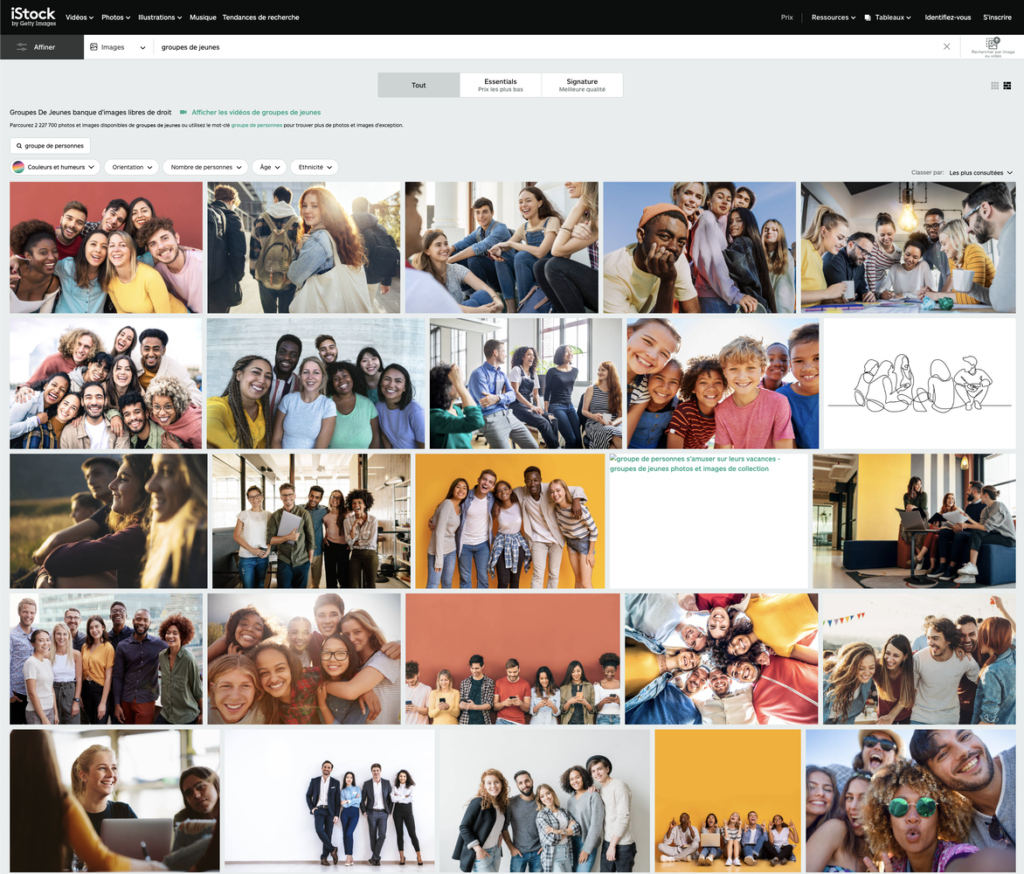
After various requests (groups of young people, collective of young people, youth diversity, young Asians, young Middle-Easterners, young West Africans), a series of parameters to filter the visuals “cosmetic ads,” “clichés” and “déjà vu,” of youth, we found that it is difficult to have access to photos of youth that are representative of their realities or natural.
This blind spot influences the ability to engage youth. Indeed, communication tools (advertisements, visuals) transmit stereotyped images of young people. In that case, imagining that they recognize themselves and feel concerned by any invitation to contribute is fictitious.
2° Promoting youth engagement through an inclusive and authentic representation: the case of Youth Talks
Visual representations of youth are essential to engage them in democratic practices.
By taking an inclusive approach, we have created advertising campaigns that speak to young people and encourage them to express themselves, share their ideas, and build a better future through consultation. The search for the images is a painstaking task on which different people have scoured the banks of royalty-free photos.
Thus, in 25 advertising campaigns, it is 48 million accounts touched, accompanied by 130 million impressions.
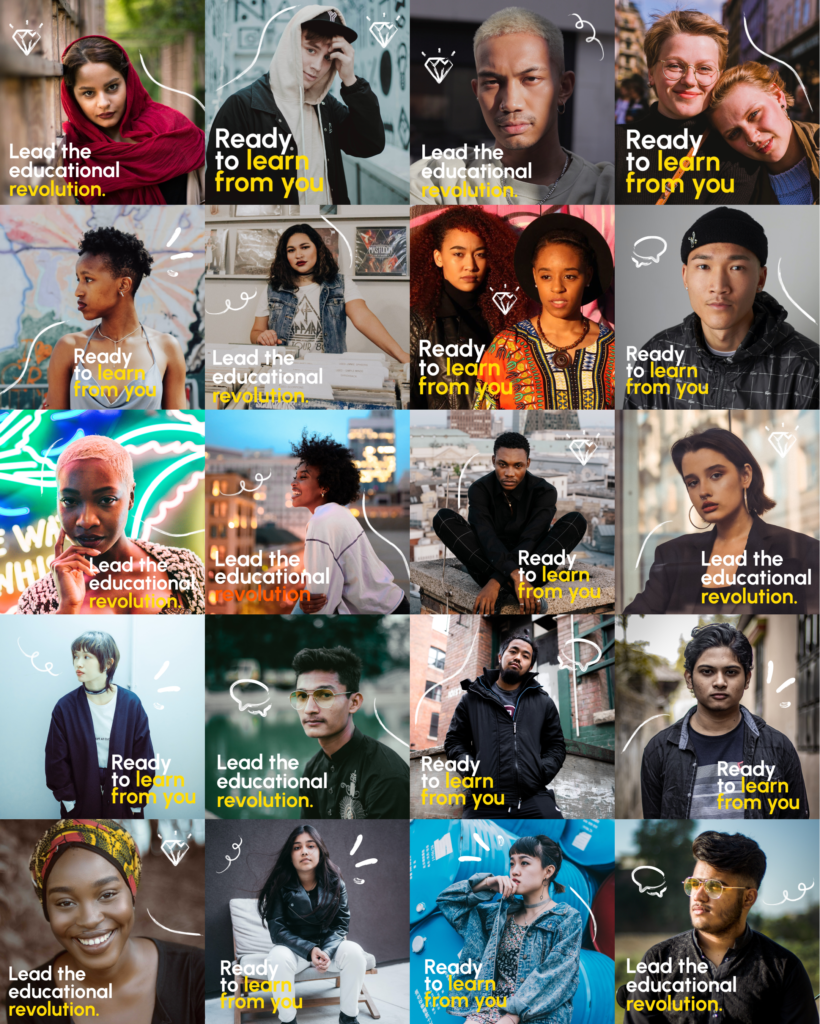
Our wish is to create more authentic, diverse, and dynamic images of youth to contribute to a world where every young person has the opportunity to express themselves and actively participate in the decisions that will shape their future.
3° Combining visual inclusion and empathy: a pivotal approach to engaging youth
To effectively reach the targeted audience for citizen consultations, developing and implementing inclusive information and engagement campaigns is crucial. In order to succeed, it’s essential to take a people-focused approach and truly listen to the hopes and worries of young individuals. This approach will enable the creation of campaigns that truly resonate with the audience and inspire them to take action.
In addition, empathy is a decisive dimension for creating authentic and meaningful connections with youth. It is embodied in developing ads that reflect their realities, hopes, and challenges. By making youths aware of the value of the process, we can motivate them to participate in decisions that will shape their future actively.
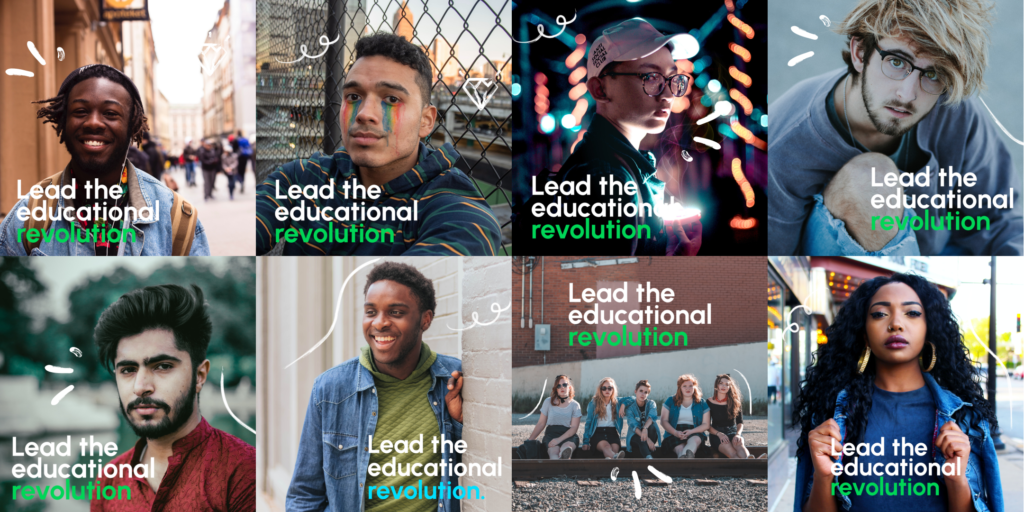
4° Reinventing the representation of youth: a call for creativity and authenticity
In order to produce more genuine and diverse pictures of young people, it’s crucial to reconsider current methods and think outside the box. Communication professionals must partner with artists, photographers, and content creators from diverse backgrounds to design visuals that reflect the richness and complexity of youth experiences. In addition, campaigns should be rooted in real stories and local contexts to provide a more accurate representation of youth realities.
In parallel, image banks and social media platforms also have a role to play in providing a more diverse and balanced representation of youth. They could rethink their selection criteria and recommendation mechanisms to put forward authentic and varied images that reflect the complexity of young people’s life paths.
It is time to recognize that the visual representation of youth is essential to engage them in democratic practices and citizen consultations. By taking an inclusive, empathetic, and creative approach, we can create communication campaigns that speak to young people and encourage them to express themselves, share their ideas, and actively participate in building a better future.
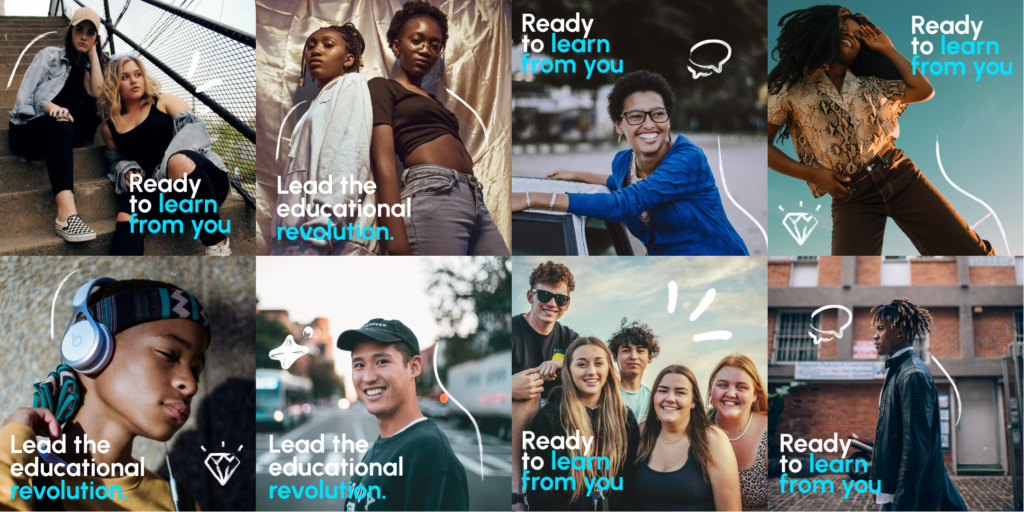
bluenove is committed as a methodological and technological partner to Youth-Talks and the Higher Education For Good Foundation, as part of the Youth and Education cause to invent new educational models based on collective intelligence and the specific mobilization of youth.
